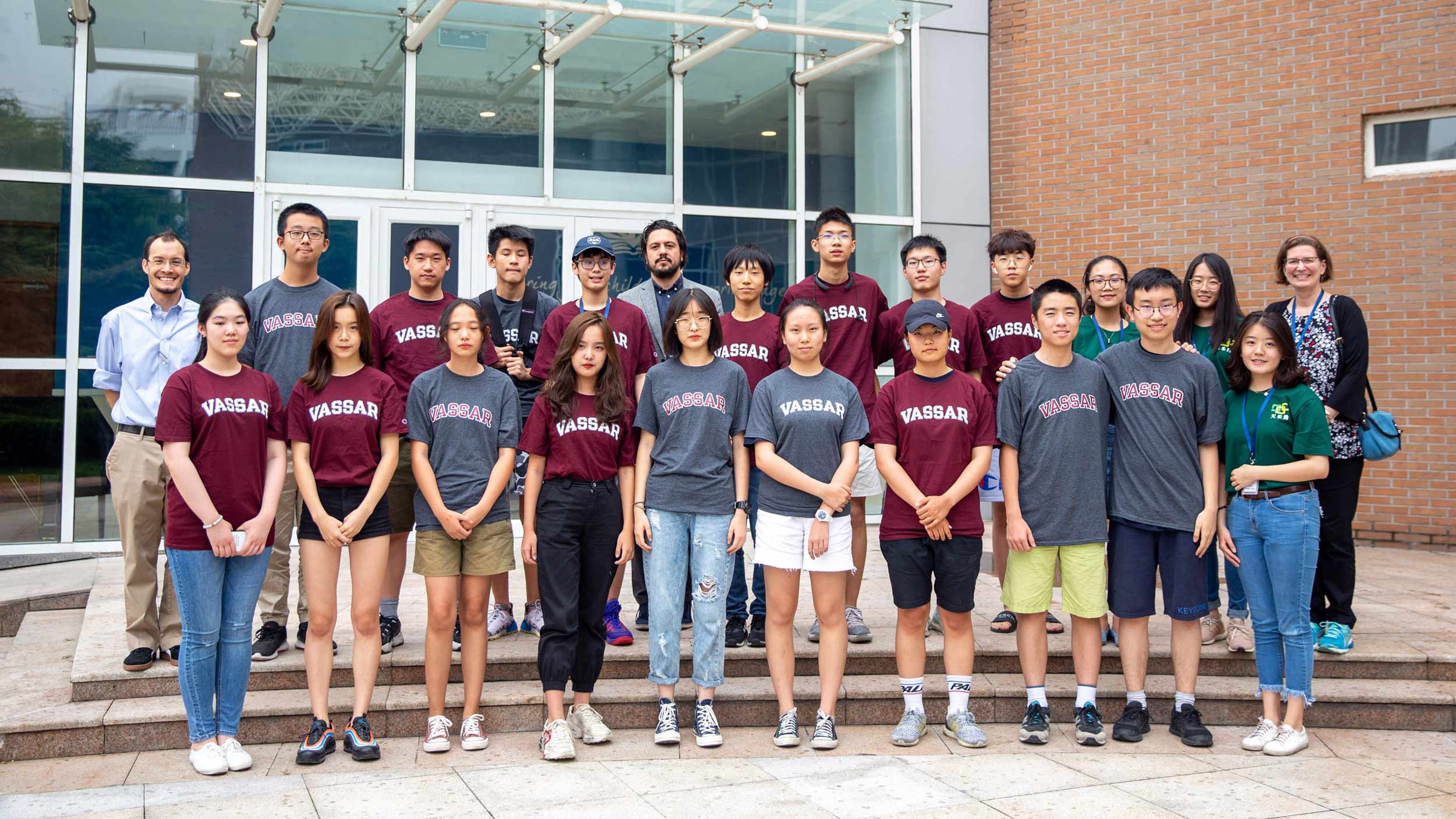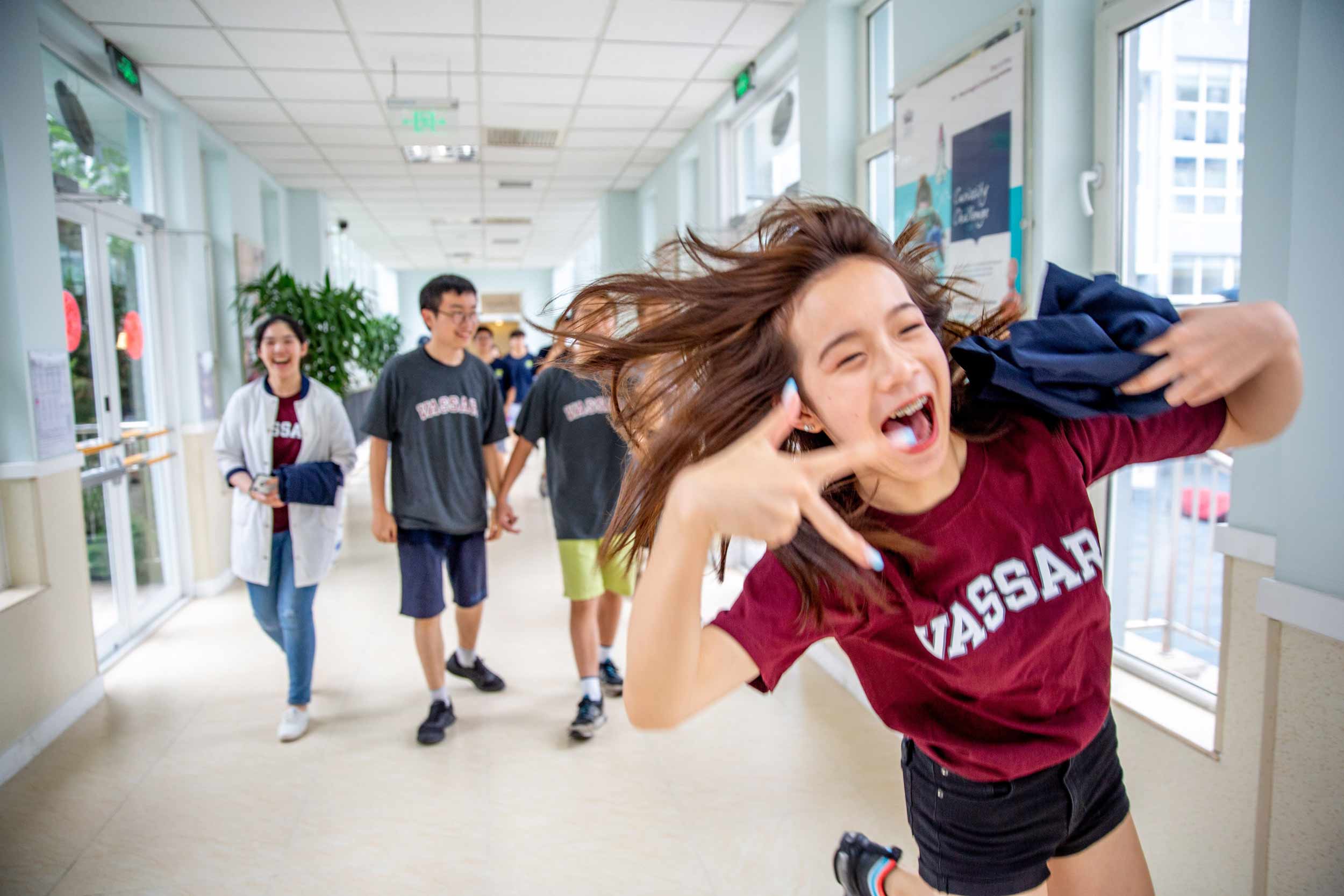In the inaugural year of a Vassar program in Beijing, this summer Vassar faculty taught classes exposing gifted high school students to a liberal arts classroom environment.
Vassar and the Diligence and Delight Learning Center (DDC) announced the partnership, initiated by Vassar Trustee Huang Hung ’84, of Beijing, last spring, but the summer program at DDC marked the inaugural event, which President Elizabeth Bradley said “aligns perfectly with one of Vassar’s prime educational objectives: to engage the college in global initiatives.”
At a dinner in Beijing attended by current and former Vassar students from China, on the first day of classes, Bradley acknowledged Vassar’s long-standing connections with China. She noted Chinese students had been attending the college for more than 100 years. Bradley added that she was certain the Vassar liberal arts model offered today’s students the best opportunity to “learn how to learn.”
“Our world is changing quickly,” she said. “It is difficult to know how best to prepare for this changing world, which is full of complex, interconnected global challenges. We all wonder what is the best path. I would like to suggest one. In a changing world, the most important skill is to be able to adapt, to take in new information and make sense of the situation. Learning how to learn is consistent with the liberal arts approach, where students learn across many different styles, topics, and paradigms. Many of our students, in fact, get a firm grounding in both science and the arts, enabling them to see meaningful connections, to be forever creative, and to be what we call truly educated.”
The Vassar faculty members said they provided their DDC students with a sampling of the college’s liberal arts approach to education in the three-week courses they taught this summer, and they said they emphasized interactive engagement and collaboration among their students.
In his class, Assistant Professor of Music Justin Patch, a member of the Media Studies faculty, had the students read a graphic novel about immigration called The Arrival, then had them work together to turn the narrative into a movie. In the second half of the course, the students were assigned individual tasks as moviemakers and produced a film based on a graphic novel called Trickster, a compendium of Native American folktales. “I had a lot of fun,” Patch said. “Some of the students were reluctant to participate fully at first, but by the time we finished the second movie, they were all fully engaged.”
Associate Professor of Psychological Science Carolyn Palmer said she knew that most of her students were not used to speaking in class, so she used some of the same techniques she employs at Vassar to stimulate a conversation. “When we discussed the readings I had assigned, I would ask them specific questions, such as ‘What are the backgrounds of the people writing these articles? What are their credentials?’” she said. “I made my expectations explicit, and the more concrete the questions were, the easier it was to get people to speak.”
Palmer had the students explore the rhythms in their own lives—breathing, walking, eating, and sleeping—as well as their favorite music and their family and cultural rituals. And she had each student prepare reports about themselves and what they are good at, and then had them critique each other’s work.
Palmer said she and Patch didn’t give grades at the end of the session, but the school did ask them to write reports describing the students’ strengths and challenges. “They emphasized that they didn’t want us to simply praise the students, but also suggest ways they could improve,” she added.
Noting that she had the opportunity to meet all of her students’ parents, Palmer said that experience prompted her to be more mindful of her own students’ backgrounds when she teaches at Vassar and to appreciate the challenges international students face. “I was reminded to be more aware of these challenges and to take the time to understand them,” she said.
While the participating faculty members said they thoroughly enjoyed the time they spent in the classroom, they also had a chance to explore some of the neighborhoods and museums of Beijing and to visit other sights outside the city. Patch said he made it a point to visit the former Olympic Village and the swimming complex where American swimmer Michael Phelps set several world records in the 2008 Summer Olympic Games.
Patch, who had taught English at a school in China during the 2002-03 school year, said he was constantly struck by China’s contrasts. “Beijing is a hypermodern city with a sophisticated rail system, juxtaposed with neighborhoods that date back to the third or fifth century,” he said. “You’re constantly reminded how long a civilization has existed in this single place.”
Palmer said she especially enjoyed a trip Hung organized to a Tibetan autonomous area called Gansu, where Palmer and others in the Vassar contingent visited a factory that had been built to help sustain families of yak herders. The factory produces cheese and yogurt made from yak milk and houses a facility that turns yak hair into yarn. During this excursion and others, Palmer noted, she was reminded of the importance of good food. “I never felt so well-nourished as I did in China,” she said.
Palmer said she was looking forward to seeing Vassar continue and enhance its relationships in China and other parts of the world.
Becoming more global changes who we are as a college, and for the better,” she added. “My primary takeaway from this experience is that the world is becoming smaller for me. I went to a place I knew little about, and I found that people are people, families are families, and teaching is teaching. It was good to become more attuned to that.

